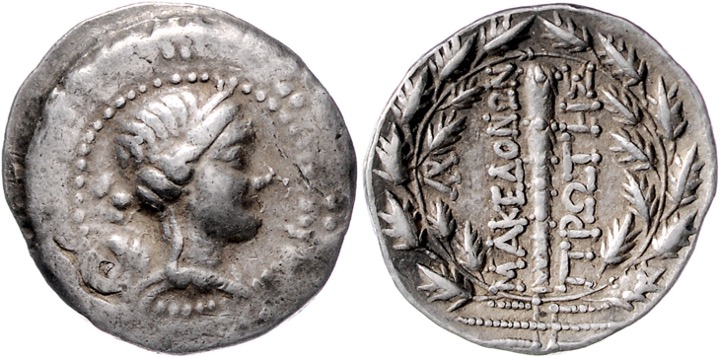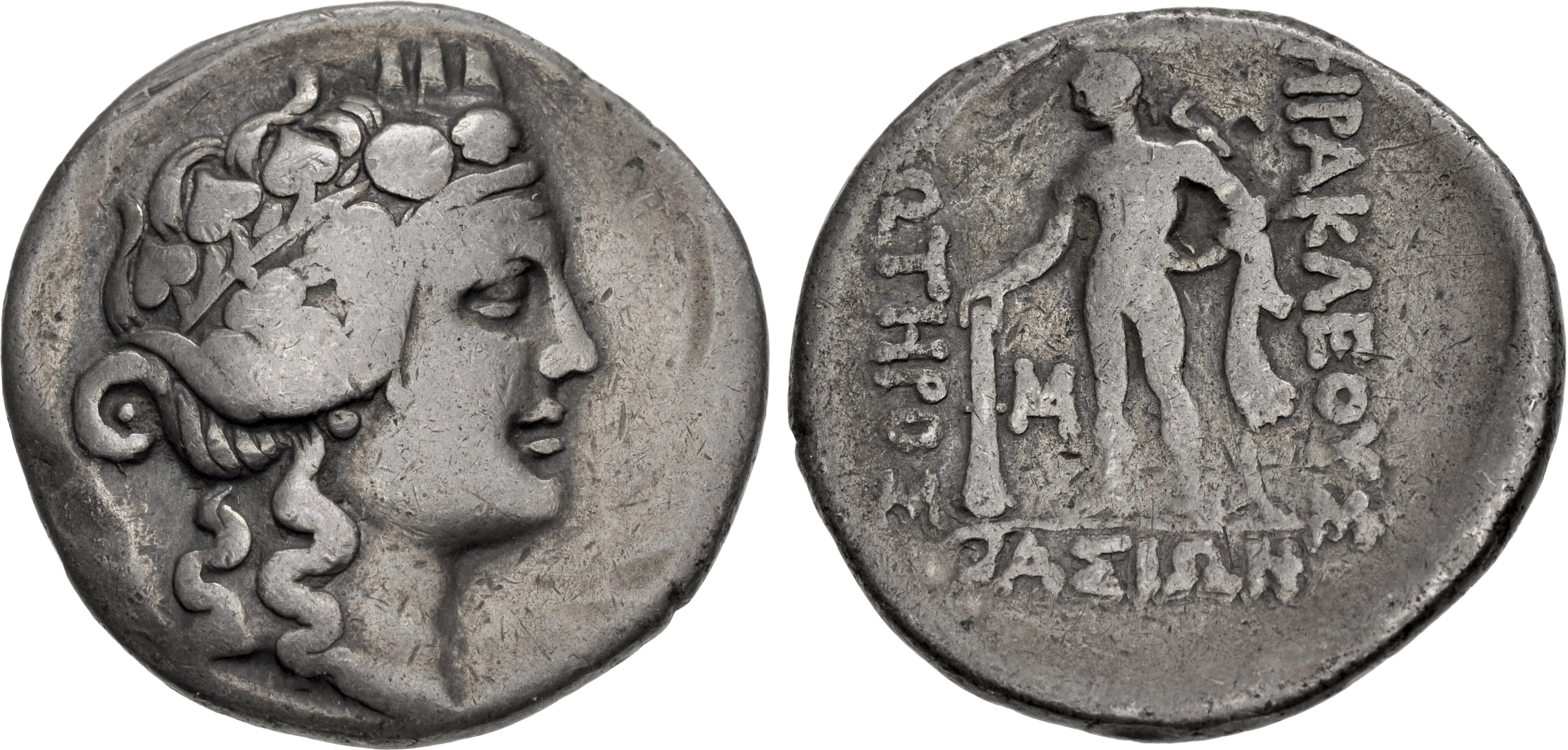167 BCE - 149 BCE | MAKEΔΟΝΩΝ ΠΡΟΤΗΣ
Overstriking coin
SO 878 - Amphipolis over Thasos?.jpg
[1]
Overstruck variety
Thasos tetradrachm.jpg
|
|
Sale(s)Sale(s) ᵖ:
|
Dorotheum, 24 May 2018, lot 1173 = Münzhandlung Lanz, Graz.
|
|
|
|
Description
| ObverseInscription or printing placed on the obverse.:
|
Macedonian shield adorned with bust of Artemis Tauropolos right, wearing stephane, draped, bow and quiver over shoulder.
|
ReverseInscription or printing placed on the reverse.:
|
MAKEΔΟΝΩΝ ΠΡΟΤΗΣ (Greek) Club. In field, monogram. All within oak wreath. Next to the tie, thunderbolt.
|
Mint and issuing power
Chronology
| FromIdentifies the initial date in a range assigned in a numismatic context. 167 BCE toIdentifies the final date in a range assigned in a numismatic context.. 149 BCE
|
Hellenistic 323-30 BC  periodTime period of the numismatic object. periodTime period of the numismatic object.
|
Physical description
MetalThe physical material (usually metal) from which an object is made.: Silver 
|
WeightWeight of the numismatic object (in grams). in grams: 16.8616.86 g <br />16,860 mg <br />
|
DenominationTerm indicating the value of a numismatic object. Examples: tetradrachm, chalkous, denarius.: tetradrachm 
|
AxisDescribes the directional relationship between the obverse and reverse of a numismatic object.: 99 mm <br />0.9 cm <br />
|
|
|
StandardStandard.: Attic
|
References
Description
| ObverseInscription or printing placed on the obverse.:
|
Head of youthful Dionysos to right, wreathed with ivy
|
ReverseInscription or printing placed on the reverse.:
|
ΗΡΑΚΛΕΟYΣ ΣΩΤΗΡΟΣ ΘΑΣΙΩΝ (Greek) Herakles standing left, resting right hand on club set on ground and holding lion's skin draped over left arm
|
Mint and issuing power
| MintIdentifies the place of manufacture or issue of a numismatic object. ᵖ:
|
Thasos
|
Ancient regionAncient region. ᵖ
|
Thrace
|
Modern countryModern country: Greece
|
AuthorityIdentifies the authority in whose name (explicitly or implicitly) a numismatic object was issued. ᵖ:
|
|
Chronology
| FromIdentifies the initial date in a range assigned in a numismatic context. 196 BCE toIdentifies the final date in a range assigned in a numismatic context.. 149 BCE
|
Hellenistic 323-30 BC  periodTime period of the numismatic object. periodTime period of the numismatic object.
|
Physical description
| DenominationTerm indicating the value of a numismatic object. Examples: tetradrachm, chalkous, denarius. ᵖ:
|
tetradrachm 
|
StandardStandard. ᵖ:
|
Attic
|
References
References
- ^ Prokopov, Ilya (1994), The Tetradrachms of First Macedonian Region. Classification of Coins from Type Head of Artemis/Club from Coin Hoards of Bulgaria, Sofia.
- ^ Hoover, Oliver D. (2016), Handbook of coins of Macedon and its neighbors. 3. Part I: Macedon, Illyria, and Epeiros, sixth to first centuries BC, Lancaster, 437 p.
- ^ Hoover, Oliver D. (2010), The Handbook of Greek Coinage Series, volume 6 : handbook of coins of the islands: Adriatic, Iionian, Thracian, Aegean, and Carpathian seas (excluding Crete and Cyprus), sixth to first centuries BC, Lancaster, 358 p.


